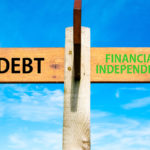By Sia Hasan
Special to the Financial Independence Hub
No one wants to be in debt, but the good news is that you don’t have to be if you make smart financial decisions. Here are six ways you can change your habits and stay out of debt.
Create a monthly budget
Creating a monthly budget can help you visualize how much money you have coming in and how much typically goes toward expenses such as electricity, Internet and maintenance. There are plenty of apps that can help you get started, or you can go the old-fashioned route and use a pencil and paper. After about a month, you’ll be able to see how you can cut down on your expenses, such as canceling subscriptions that you don’t need or use.
Go Green
Not only can you go green on a budget, but it can actually save you money in the process. The next time you’re low on food, try going to the local farmers market instead of the grocery store. Contrary to popular belief, one study found that farmers markets are 10 to 20% less expensive than grocery stores. While you’re at it, bring your own reusable bag with you when shopping. Some stores will give you a refund, which can add up to $10 of savings a week. If you’re looking for another way to go green, installing solar panels in your home can be a great way to help the environment and save money at the same time. Although the initial investment may be large, you’ll actually end up cutting electrical costs in the long run. One study found that you can save up to $30,000 in the first 20 years after installing solar panels. If you’re interested in going solar, Loanpal can provide you with financing options.
Leave your credit cards at home
Unlike a credit card, you can’t overspend cash once it’s gone. Before you go on your next trip to the grocery store, bring only the amount of money that you think you’ll need. This way, you can stick to your list and you won’t be tempted to buy any extra treats or unnecessary items. Credit cards can make it difficult to know how much you’re actually spending, which can lead to costs rapidly accumulating. Continue Reading…






